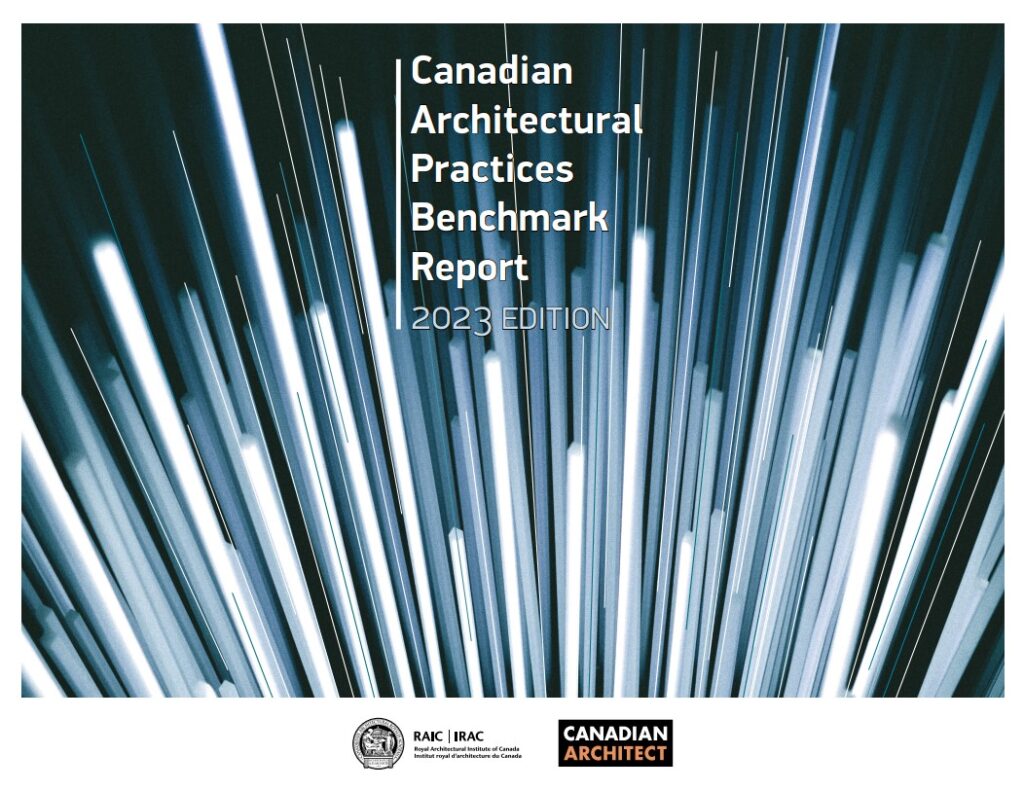In recent years, the world of work has undergone a significant transformation, and architecture firms are no exception. The traditional 9-to-5 office setup is no longer the only option for architects and designers who are creative creatures with varying productivity times. As the lines between work and life continue to blur, architecture firms are increasingly turning to hybrid office models to adapt to the changing landscape.
According to the 2023 Canadian Architectural Practices Benchmark Report, 83% of respondents indicated that their firm accommodates remote working. However firms choose to accommodate hybrid work, the expectation for days worked in office still remains high. About 53% of respondents from this survey indicated that despite a hybrid work policy being in place, the expectation was to work 4+ days in office.

Gone are the days of the expansive offices of rows of drafting tables and while some offices may keep the relics of the past as “antique” conversation pieces, the reality is that all an architect really needs today is a laptop and a sketchbook, give or take a tablet or two.
Hybrid office work combines the benefits of in-person collaboration with the flexibility of remote work. With most employees in architectural offices spending their day at a computer, there are differing opinions as to how much employees benefit from commuting to the office to turn on a computer they could use at home. Close to half of respondents from the Canadian Architect Benchmark Survey reported that firm productivity has remained unchanged with hybrid work. This goes without saying that there is a consensus in the field that we can value the importance of face-to-face interactions in the interest of creativity and idea-sharing while acknowledging the desire for work-life balance and the productivity advantages of remote work. This in turn points to the need for more intentionality around how and where we choose to do different types of tasks.

TRACE has been working towards a hybrid work policy that accounts for different work styles, including those living in rural areas, night owls, early risers and those with dependents. Our office of 8 people has core working hours between 10 a.m.-12 p.m. and 1-3 p.m., with the remaining weekly hours to be done at the employee’s discretion. We have observed that generally employees work between the hours of 8:30 a.m. and 5:30 p.m., but the option for flexibility has greatly expanded our employees’ definition of a workday, with more flexibility for commuting, hobbies, exercise or family responsibilities.
However to say that the shift to hybrid work was difficult would be an understatement. With no formal IT staff, we had to make quick adjustments at the onset of the COVID-19 pandemic. This included moving our internal server to a cloud-based platform and finding digital tools to suit our needs. As a starting point, the shift required a different approach where remote-focused work was prioritized since it is the most intense approach from a tech stack and support perspective. This assisted in onboarding all employees within a tight time frame, so that efforts to become familiar with the new cloud-based platform and other communication tools was focused and effective.
Based on our experience shifting to remote work, here are a few challenges we observed:
- Costs associated with digital hubs and project management software to enhance hybrid work and remote communication;
- Finding a balance of required leased office space;
- Sorting through various hardware and software options and approaches;
- Accepting that there was no single tool that would facilitate all of our needs;
- Exploring opportunities to leverage and build-on existing approaches and software to lessen the overall burden of the evolution, where possible;
- Junior employees requiring intentional mentoring and with reserved scheduled time blocks; and,
- Refining and creating communication strategies to support remote-hybrid-in-person activities.
The Importance of a Consolidated Digital Hub
Effective communication and collaboration are vital in architecture, and hybrid office models can provide the best of both worlds. In-person interactions foster creativity, mentorship, and team building, while digital tools and virtual meetings bridge the gap for remote workers. Our search for a digital project management and time tracking tool has been a journey. However, the consensus in the office is that it is necessary to keep lines of communication open in remote work. This exploration was well timed as it provided a lens through which we explored how and what we wanted to communicate across the team related to projects and larger studio-wide considerations. It has provided an opportunity for the studio to evolve and be more intentional about how we organize our time and workload. Benefits have included identifying employee current workloads to avoid bottlenecks before deliverables.
Organization and communication are two critical aspects of our and really any hybrid approach (which continues to evolve). Our digital hub provides a consistent experience for the entire team and helps everyone understand where a project stands without the need for long meetings. By working to consolidate information sources and expand how we track things like tasks, schedules, time and workloads, we are also able to better articulate and understand current and future needs and project loads to improve the quality of services and better manage time commitments of team members.
Over time we have found all of this to be a strong positive for us internally, but has also proven beneficial within our broader portfolio of work. Often we are engaged as consultants within a larger team, with a lead architect located outside of the National Capital Region. In many ways the growth in our internal collaborative approaches have been transferable to these relationships with other firms improving these relationships and approaches.


